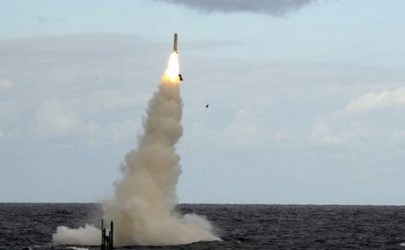By James Hookway
Vietnam held a live-fire naval drill off its coast Monday in a move that analysts said reflects the increasingly uncompromising stance among countries competing with China to claim the vast energy resources believed to lie below the South China Sea.
The exercises around the island of Hon Ong, around 25 miles or 40 kilometers off the coast of central Vietnam, come after a series of clashes between Chinese and Vietnamese vessels over oil exploration in the area, and the Associated Press reported that the drill began early Monday.
The maneuvers also follow Vietnam’s announcement over the weekend that it would welcome foreign involvement to resolve the rival claims to the potentially resource-rich waters—an apparent reference, analysts say, to the U.S., which last year infuriated Beijing by saying that resolving disputes in the hotly contested South China Sea is in America’s national interest.
“The point of these exercises is to send a clear message that Vietnam is serious about protecting its interests in the South China Sea and that it won’t be bullied by China,” said Ian Storey, a specialist on the region and fellow at the Institute of Southeast Asian Studies in Singapore.
Tensions have been building for months in the South China Sea, which is claimed in whole or in part by China, Vietnam, the Philippines, Malaysia, Taiwan and Brunei and also contains some of the world’s busiest shipping lanes.
Vietnam last week accused a Chinese fishing vessel, backed up by two patrol boats, of snapping the cables of an exploration boat operated by state oil company PetroVietnam, prompting a sharp exchange of words between Beijing and Hanoi and triggering rare street protests in Vietnam’s biggest cities.
In late May, Vietnamese officials accused Chinese vessels of sabotaging another exploration vessel operating within 200 nautical miles of Vietnam’s coast, which Hanoi regards as its own exclusive economic zone as provided under international law. The Philippines, too, has complained about Chinese military intimidation of survey vessels operating in Philippine waters and has accused China of attempting to build fresh structures near the Spratly Islands.
Chinese foreign ministry officials couldn’t be reached for comment. But Beijing previously has said it wishes to preserve stability in the South China Sea while insisting on its sovereignty over the whole area. Last week, China’s ambassador to the Philippines, Liu Jianchao, warned neighboring countries not to explore for oil without its permission.
China and its neighbors are divided on how to reconcile their respective claims in the South China Sea. The 10 members of the Association of Southeast Asian Nations, especially Vietnam and the Philippines, are pushing for multilateral negotiations to resolve sovereignty disputes, particularly disputes over the semi-submerged atolls and reefs known as the Paracels and Spratly Islands. During its chairmanship of Asean last year, Vietnam initiated moves to internationalize the dispute, with the goal of providing a stronger counterweight to China’s growing diplomatic and military power.
That move angered Beijing, which last year described the South China Sea as a core national interest and which prefers to negotiate settlements separately with each individual claimant country.
The recent conflicts in the South China Sea are, in a broad sense, part of a long-established cycle of rival claimants probing each other’s resolve. Occasionally, water-borne encounters lead to a loss of life. In 1988, more than 70 Vietnamese sailors died when Chinese vessels sank three Vietnamese navy ships near Johnson Reef. More often, tensions recede and the competing nations resume their slow progress toward negotiating a way to exploit to the oil and gas reserves in the area.
This time, Vietnam has responded to China’s alleged infringements with a significantly harder line. Vietnamese Prime Minister Nguyen Tan Dung last week described Vietnam’s claim to area as “incontestable,” while Monday’s exercises, which Vietnam’s foreign ministry described as part of a regular annual drill, were announced with unusual public fanfare and appear set to raise tensions further.
Details of Monday’s exercises were unclear. Government officials didn’t return calls seeking comment.
The Associated Press reported a Vietnamese naval officer as saying the drill focused on artillery and no missiles were involved. Further exercises were planned for later Monday evening.
Still, Vietnam might not go much further in flexing its military muscle. Carlyle Thayer, a professor at Australian Defence Force Academy at the University of New South Wales, said that if Vietnam uses disproportionate force to make its point, China could seize on it to claim that Vietnam is the aggressor.
“China’s intent is to intimidate Vietnam into backing down or provoke it into taking action that would divide the other Asean members,” Mr. Thayer said. Vietnam, he said, “must be careful not to take steps that make [itself] the problem.”



















